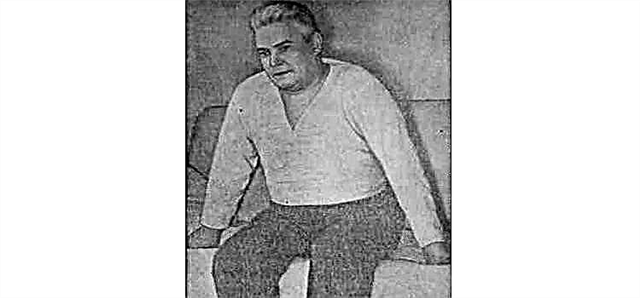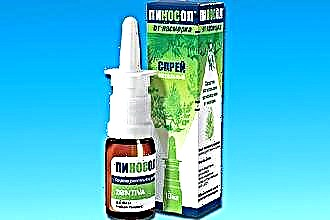Purulent sore throat is rightfully considered one of the most dangerous childhood diseases. Moreover, this disease occurs very often, especially in children 6-12 years old, however, it can be diagnosed both in infants at 2 years old, and in an elderly person.
 A purulent sore throat in a child with a high fever is an acute lacunar or follicular tonsillitis (i.e. inflammation of the tonsils).
A purulent sore throat in a child with a high fever is an acute lacunar or follicular tonsillitis (i.e. inflammation of the tonsils).
Compared with the catarrhal form of sore throat, purulent has more pronounced symptoms of intoxication and local damage to the tonsils. As a result, the patient suffers from severe headache, malaise, sore throat.
Many parents noticed that purulent tonsillitis in children is accompanied by a deterioration in appetite, capriciousness of the child, since he cannot eat, drink or even talk normally.
Of particular concern for parents is fever - the body temperature of a child with purulent sore throat can exceed 39 C.
Can purulent sore throat in a child proceed without fever? What diseases can be hidden behind this condition? When do you need a doctor's help? We will answer these and other questions in this article.
Angina - what it is
We all know that healthy tonsils are pink, small, covered with a transparent secretion of the mucous glands. During inflammation, the lymphoid tissue swells, the tonsils become red, enlarged. The plaque covering them also changes - it becomes viscous, mucopurulent. This condition is called acute catarrhal tonsillitis, or catarrhal tonsillitis. This is the mildest form of the disease. It can be caused by both bacteria and viruses.
If the plaque on the tonsils acquires a characteristic purulent color, you should consult a doctor. The cause of purulent sore throat in children is bacteria, primarily streptococcus.
Purulent sore throat in a child with and without fever is a serious cause for concern in any case, because the appearance of pus is a sure sign of infection.
Purulent tonsillitis is of two types - follicular and lacunar. With the follicular form of the disease, punctate abscesses are visible on the tonsils. They look like small white or yellowish tubercles. The tissue of the tonsils around the abscesses is swollen, red, sometimes with damaged vessels.
In the lacunar form of sore throat, pus fills the folds of the tonsils, called lacunae. Sometimes the gaps are completely filled, and the pus covers the tonsils with a continuous film. At the same time, the plaque on the tonsils is loose, easily removable, yellowish-white.
The body temperature with purulent sore throat in a child always exceeds 38 C. This is true for both follicular and lacunar forms of purulent tonsillitis.
Why does pus appear on the tonsils?
Why does the plaque on the tonsils become purulent? It turns out that the formation of pus is a consequence of the body's immune response to the introduction of pathogenic bacteria. The pus covering the tonsils consists of:
- serum, which is secreted through the walls of blood vessels as a result of acute inflammation;
- secretion of the mucous membranes of the upper respiratory tract;
- waste products of bacteria;
- dead and live bacteria;
- living and dead leukocytes - immune cells that absorb and digest bacteria;
- dead cells of the epithelium, food particles and other impurities.
Thus, pus is not the cause of the disease, but rather its consequence. Many people have noticed that reducing the amount of pus (for example, after gargling) can improve well-being. However, it is worth noting that this is a temporary improvement - since the infection has not been eradicated, the pus will quickly reappear.
It is strongly not recommended to remove pus from the tonsils mechanically - the inflamed lymphoid tissue is very easy to damage, which can lead to the spread of infection deep into the tissue.
In addition, by touching the throat, a person can transfer bacteria from the tonsils to the paratonsillar areas of the pharynx. For the same reason, it is not recommended to lubricate the tonsils with drugs (Lugol solution, chlorophyllipt tincture, etc.).
More recently, they have been used very actively, but modern medicine has more effective drugs that are more convenient and safer to use. Today, preparations containing lugol, chlorophyllipt and other antiseptics are produced in the form of sprays or rinsing solutions. They reduce the number of pus and bacteria without the risk of damaging the tonsils and spreading the infection.
True purulent sore throat
True purulent sore throat means acute follicular or lacunar tonsillitis caused by a bacterial infection of the tonsils. In the vast majority of cases, this condition is due to streptococcal infection.
In both adults and children, purulent tonsillitis is always accompanied by the following symptoms:
- an increase in body temperature (from 38 C and above, in a child 3-7 years old it often exceeds 39 C);
- acute sore throat, which is worse when swallowing;
- the appearance on the surface of the tonsils of pus in the form of separate points or a solid film, while the pus is loose, loose, easily removable;
- enlargement of the submandibular lymph nodes.
Runny nose, cough, conjunctivitis, sneezing, etc. with true purulent sore throat are absent. The appearance of such symptoms indicates a viral infection.
Treatment of purulent streptococcal sore throat is based on the use of systemic antibiotics. Local treatment (rinsing, irrigation with sprays, resorption of tablets and lozenges) is used as an adjunctive therapy, but it cannot eliminate the infection on its own.
Purulent sore throat without fever
 If purulent sore throat is always accompanied by fever, what then is a condition in which the tonsils are covered with plaque, but the body temperature is normal? In fact, many diseases can be hidden behind a purulent sore throat without fever.
If purulent sore throat is always accompanied by fever, what then is a condition in which the tonsils are covered with plaque, but the body temperature is normal? In fact, many diseases can be hidden behind a purulent sore throat without fever.
Parents, seeing a plaque in the child's throat, may take it for a manifestation of purulent sore throat, but this is not always the case. For example, purulent sore throat in a child at 1 year old often turns out to be candidiasis (this disease is also called thrush). Candidiasis is a fungal disease. Plaque with candidiasis is lighter and lumpy.
In addition, candidiasis is almost never accompanied by fever and sore throat - symptoms that are mandatory for sore throat.
Also, for a purulent sore throat in a child aged 2-3 years, infectious mononucleosis, diphtheria, herpangina and other diseases are sometimes taken, the treatment of which is completely different than with streptococcal sore throat.
In older children, tonsil abscesses can be a sign of chronic tonsillitis. This disease occurs as a result of insufficient treatment of acute bacterial sore throat. Chronic tonsillitis can periodically worsen, causing symptoms similar to angina, but to a lesser extent.
Chronic tonsillitis is a very dangerous disease. The constant presence of a focus of infection in the body disrupts the functioning of the immune system.
Chronic tonsillitis is the leading cause of rheumatism, a systemic autoimmune disorder that affects the heart, kidneys and joints.
Treatment of chronic tonsillitis includes a local effect on the tonsils (antiseptic treatment, removal of purulent plugs) and systemic antibiotic therapy. Do not try to remove the plugs yourself - they will do it painlessly and safely in the ENT office.
Differential diagnosis
It is far from always possible to independently determine which disease caused the appearance of plaque on the tonsils.We suggest that you familiarize yourself with the table, which presents some of the pathologies accompanied by this manifestation.
| Pathology form | Plaque | Body temperature | Features and typical symptoms | Basis of treatment |
| Purulent sore throat (streptococcus) | Yellowish or greenish white, in the form of dots or spots of various sizes; easily removable. | High - 38-39 C, sometimes higher. | The accompanying symptoms are minimal - weakness, headache, swollen lymph nodes. Sore throat is acute, worse when swallowing. | Antibiotic therapy (course of 5-14 days) in combination with local antiseptic drugs. Usually, drugs of the penicillin series are used. |
| Herpangina (Coxsackie virus) | In the first 2-3 days, bubbles appear on the tonsils. Then they burst, and in their place white specks form, which resemble pustules. | Increased within a few days. | Headache, disruption of the stomach and intestines - vomiting, diarrhea. Sore throat is moderate. Seasonality is characteristic (summer - early autumn). | Detoxification therapy - drinking plenty of fluids, balanced nutrition; also - gargling, irrigation with antiseptics. Within a week, the child develops immunity. |
| Acute viral tonsillitis (ARVI viruses) | Mucous or mucopurulent (cloudy). | In children, it can exceed 38 C. | Sneezing, runny nose, conjunctivitis, swollen lymph nodes. | Antiviral therapy (at the beginning of treatment in the first 2 days of illness), gargling, irrigation. |
| Scarlet fever (streptococcus) | Yellowish-green dense bloom. | 38-40C | Rash on the face, redness of the tongue, headache, nausea, sometimes vomiting, sore throat. | Penicillin antibiotics in tablets, course 10-14 days. |
| Infectious mononucleosis (Epstein-Barr virus) | The plaque resembles pus with lacunar sore throat, it looks like islets. | Varies from normal to high. | Swollen lymph nodes on the body. Pallor, weakness, sore throat. | Valacyclovir (antiviral agent) + symptomatic treatment. |
| Angina Simanovsky (simultaneously two pathogens - fusiform stick + spirochete) | Plaque on one tonsil, loose, cheesy, with a greenish or yellow tinge. | Normally, less often 37 C. | Putrid breath, swollen lymph nodes. Mild pain when swallowing. | Local antibacterial treatment, in severe cases - antibiotics in tablets. |
| Fungal tonsillitis (candida) | White curdled bloom in the form of separate lumps that are easily separated. | Fine | There are no accompanying symptoms. Dry throat and sore throat may bother you. Often worried about infants under 2 years old. | Antifungal drugs of local and general action. |
| Pharyngeal diphtheria (Löffler's bacillus) | The plaque is filmy, gray-white, dense, in the form of islands or solid, cannot be removed. | The first 2 days 37-38 C, then subsides. | Drowsiness, pallor, loss of appetite. Sore throat is weak. | The introduction of anti-toxic anti-diphtheria serum (PDS), which suppresses diphtheria toxin. |

 It is strongly not recommended to remove pus from the tonsils mechanically - the inflamed lymphoid tissue is very easy to damage, which can lead to the spread of infection deep into the tissue.
It is strongly not recommended to remove pus from the tonsils mechanically - the inflamed lymphoid tissue is very easy to damage, which can lead to the spread of infection deep into the tissue.

